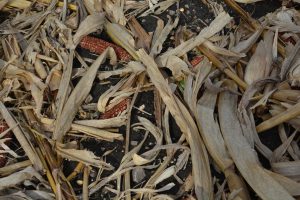Iowa-based Regional Strategic, Ltd. examined the economic impact of collecting, processing, and delivering corn stover byproducts of ethanol – the stalks, leaves, and stems of corn plants – for use in generating electricity. The stover is compressed into biomass pellets that can be burned like coal in existing power plants, reducing CO2 emissions and increasing renewable energy supplies. This is similar to the use of wood pellets in European power plants.
The studies were commissioned by Larksen LLC, an affiliate of Trestle Energy, a California-based biofuel company specializing in low carbon production system. Larksen estimates that corn grown for ethanol in the six major ethanol-producing states “could yield roughly 44 million tons of harvestable corn stover per year. It is conceivable that this stover could replace around 37 million tons of coal used for electricity generation.”
However, the economic studies are based on harvesting all leftover crop residue from corn going to ethanol production and do not appear to take into consideration the conservation benefits of corn stover and crop residue, much of which is left in the fields for no-till or low-tillage farming operations.


